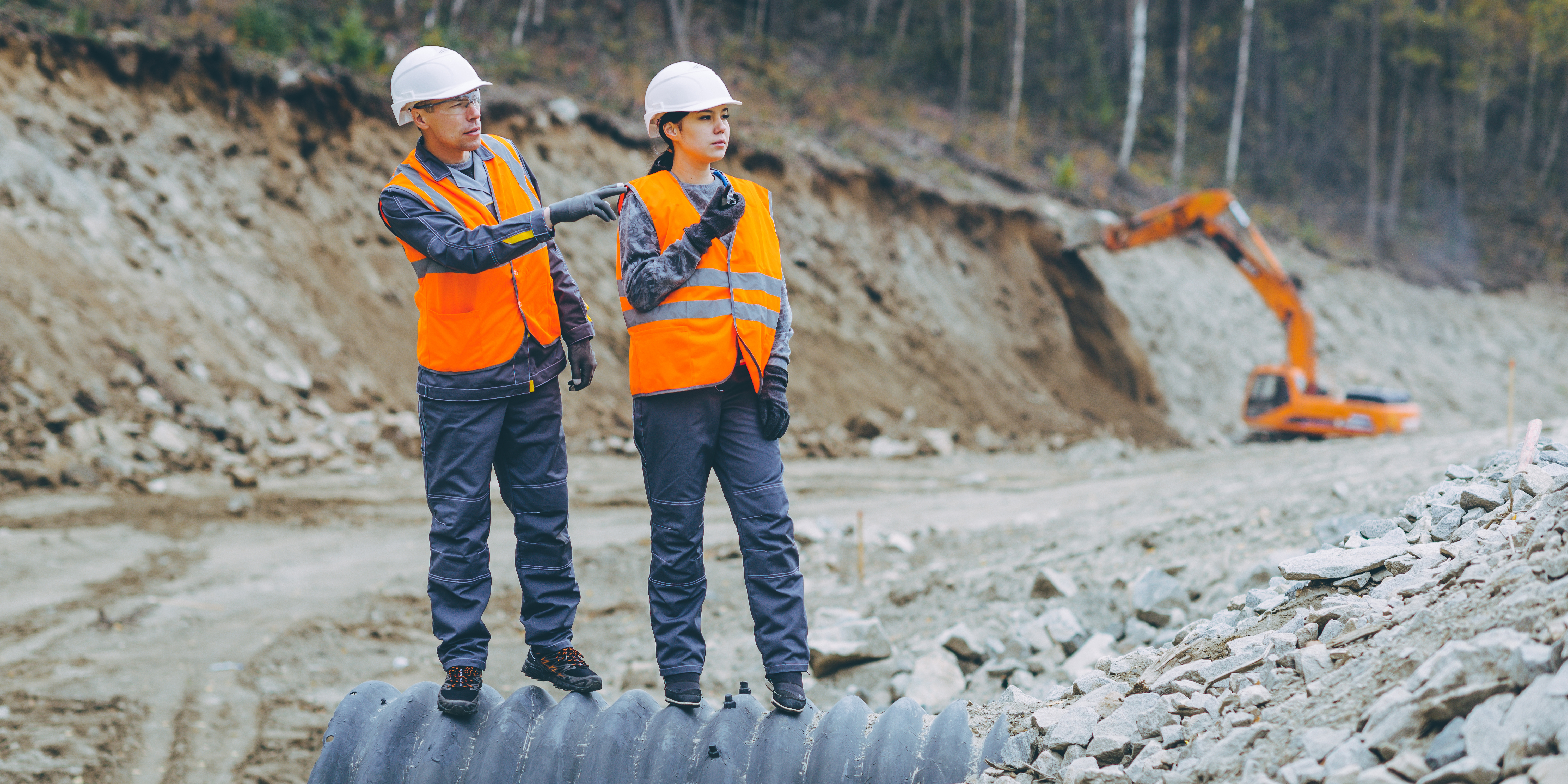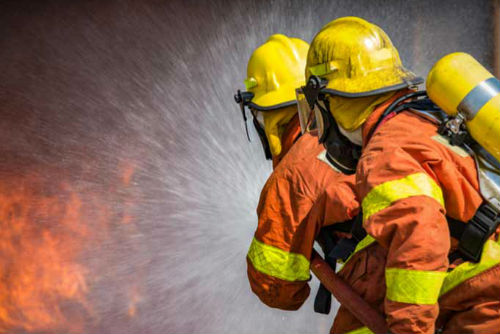High visibility clothing is an important part of workplace safety. It is
worn by all kinds of people across a range of industries and has even made its
way into sport and fashion!
The evolution of high visibility clothing represents an important change in
workplace safety measures, enhancing safety by reducing workplace accidents and
increasing visibility in high-risk or low-light environments. Employers have a
responsibility to ensure that employees are given the tools and equipment to do
their jobs safely and make sure they adhere to workwear standards.
A Spark in the Dark: Early Uses of Reflective Materials
The entire idea of a high visibility outfit dates to the 1920s and 1930s.
When retro reflective materials and reflective surfaces became available for
signage and vehicle use, it began to improve visibility.
Early Uses of High-Visibility Clothing
Initially, high-visibility clothes date from the 20th century. Workers in
highly risky areas such as railway and road workers wore bright colours for
their work clothes. These practices arise from need and are essential to
ensuring that workers have visible access to their vehicles and equipment to
prevent accidents.
The history of high visibility workwear
The origins of high visibility workwear are found in the 1930s, when Bob
Switzer was injured while unloading crates at a Heinz Ketchup factory. He was
injured so badly that he went into a coma and his eyesight was permanently
damaged.
To help his recovery, Switzer spent time in a dark room where his brother
entertained him using fluorescent chemicals. Once fully-recovered, Swizter
experimented further with fluorescent chemicals and the brothers invented the
first fluorescent paint; also known as high visibility paint.
After Switzer’s discovery, scientists and engineers began exploring other
ways of using fluorescence. During World War II, the U.S started experimenting
with using high visibility garments to reduce friendly fire and to communicate
between ground and air troops. High viz buoys were also used to distinguish
what parts of the sea had been searched for explosives.
A significant step in its use in workwear was made in 1964, when Scottish
Rail became the first company to introduce high visibility workwear to the rail
services due to a high number of safety concerns. The success and importance of
this is apparent, as by 1965 every rail worker on the West Coast Main Line was
issued with protective gear.
The 1970s was The Golden Era of Hi-Vis: the widespread adoption of high
visibility workwear in industries such as construction sites, aviation and
emergency services as a safety measure.

Fast-forward to the Health
and Safety at Work Act 1974, which puts the responsibility for health and
safety in the workplace on employers and employees. Safety regulations often
mandate the use of high-visibility clothing to ensure worker safety and
visibility, especially in hazardous conditions or low-light environments. It
continues to be updated and amended today, and has led to significantly fewer
fatalities and accidents in the workplace.
Initial Materials and Designs
At its beginning, the high-visibility apparel was rudimentary but often
improvised. It was never specifically intended for visible applications. Bright
colours have become a preferred material for people who had less visual
interest. These are usually cotton and wool that offer greater visibility but
lack reflective or fluorescent qualities of modern high-vis materials. These
design styles were also simple and included a vest, jacket and sometimes hat or
cap. These garments were designed specifically to be visible and prevent the
employee from moving around.
The high visibility evolution: High visibility clothing in 2024
With our needs growing and developments in technology moving alongside said
needs, high visibility clothing has come a long way since the Switzer brothers’
dark room. Safety standards play a crucial role in defining the requirements
for high-visibility clothing, ensuring workplace safety, and improving
visibility in various industries.
The Personal
Protective Equipment at Work (Amendment) Regulations 2022 provides specific
guidance to employers “to ensure that suitable PPE is provided to ‘employees’
who may be exposed to a risk to their health or safety while at work.” As of
April 2022, this now includes limb workers (contractors) too.
High visibility clothing is required if deemed necessary by a risk
assessment. Employers must provide high vis clothing for free to employees. Our
own phs Besafe Bright Gear is designed to meet the needs of today’s workforce.
What is high-visibility clothing made from?
Using the technology that has developed over the years, high visibility
clothing is made using fluorescent and retro reflective materials designed to
enhance the wearer’s visibility in various lighting conditions.
Reflective clothing, including high visibility garments, uses fluorescent
material that reacts with natural or artificial light, making the fabric appear
to glow. The reflective strips on high visibility clothing are to help with
protection in the dark. Light sources, such as cars or torches will cause the
strips to glow. For protection in any environment, including wet weather, high
visibility workwear should have a mix of fluorescent colours and reflective
strips.
When should high visibility clothing be worn?
In 1974 Health and safety law was formally introduced in England. Those
requirements constituted the standards the employer had to comply with with
respect to safety. ACT requires employees to be seen when working at risk. The
Act introduced personal protective gear in 1992. Workwear must meet the
requirements required to work at any workplace. Workwear must likewise conform
to Health Safety Policy and safety regulations. EN ISO 20471
is an ISO standard for high-visibility garments introduced in 1994.
How often should you replace your high visibility clothing?
High visibility
clothing should be regularly checked to confirm it has retained its glowing
qualities after being washed. It is important to regularly clean high
visibility safety workwear as dirt can hinder its effectiveness.
There is no set time that you should replace high visibility safety
clothing, as there are several varying factors, such as the number of wash
cycles or any damage to the fabric. Credible manufacturers should provide you
with detailed wash cycle information, you should follow these instructions
carefully. You should do a quick check before every use, it could save your
life.
The importance of high visibility gear in safety
High visibility gear plays an important role in enhancing safety across
various environments, particularly in occupations and situations where
visibility is compromised – this could include people who work in dark
conditions and those who work at night. By wearing clothing made from
fluorescent and retroreflective materials, workers become significantly more
visible to others, thereby reducing the risk of accidents. This gear is
especially important for those working in construction, road maintenance, and
emergency services, where high visibility can prevent collisions and other
dangerous incidents. High visibility clothing is also essential for cyclists,
joggers, and motorcyclists, helping them to be seen by drivers, particularly in
low-light conditions.
While it’s a simple measure, using high visibility gear can be a very
effective and affordable way to enhance safety and prevent injuries.
Emergency Services: Adaptations for Visibility in Critical Situations

For police and emergency personnel such as firefighters and medical
personnel, visibility is critical. High-visibility clothing is designed for the
job, as well as the need for quick identification and ensuring that they're
visible. Typically clothing is designed to have particular colours and reflect
patterns for different types of emergencies. In addition, these garments can be
adapted for optimal mobility and to carry other equipment when an emergency
occurs.
Standards and Certifications
In addition to enhancing visibility, the clothing is backed by several
internationally recognized safety standards and certifications. Some of the
most famous examples include EN ISO 20471 The standard AS/NZS4602.3:2011 in
Australia specifies specific requirements for workwear for persons exposed in traffic.
This standard includes critical elements ranging from material choice to design
considerations and performance criteria.
Choose phs Besafe for high visibility safety clothing
phs Besafe is one of the UK’s leading suppliers of high visibility clothing.
Our essential safety wear is designed for optimum functionality, durability and
protection. We offer a tailored workwear service that provides you with
everything you need, no matter the size of your business or organisation.
We make it our job to stay up to date with innovations in high visibility
workwear to make sure our customers can benefit from high-quality protection,
no matter the conditions they’re working in. As you can see from the history of
high visibility clothing, things have come a long way since it was invented in
the 1930s, and the products we provide at phs Besafe still follow those early
principles of workwear safety.
Explore our safety clothing
range to see what we have to offer.
In addition to supplying workwear, phs Besafe also provides laundry and locker
services, as well as garment
destruction where needed. Whatever your needs, we’re here to help. Contact us today for more
information.